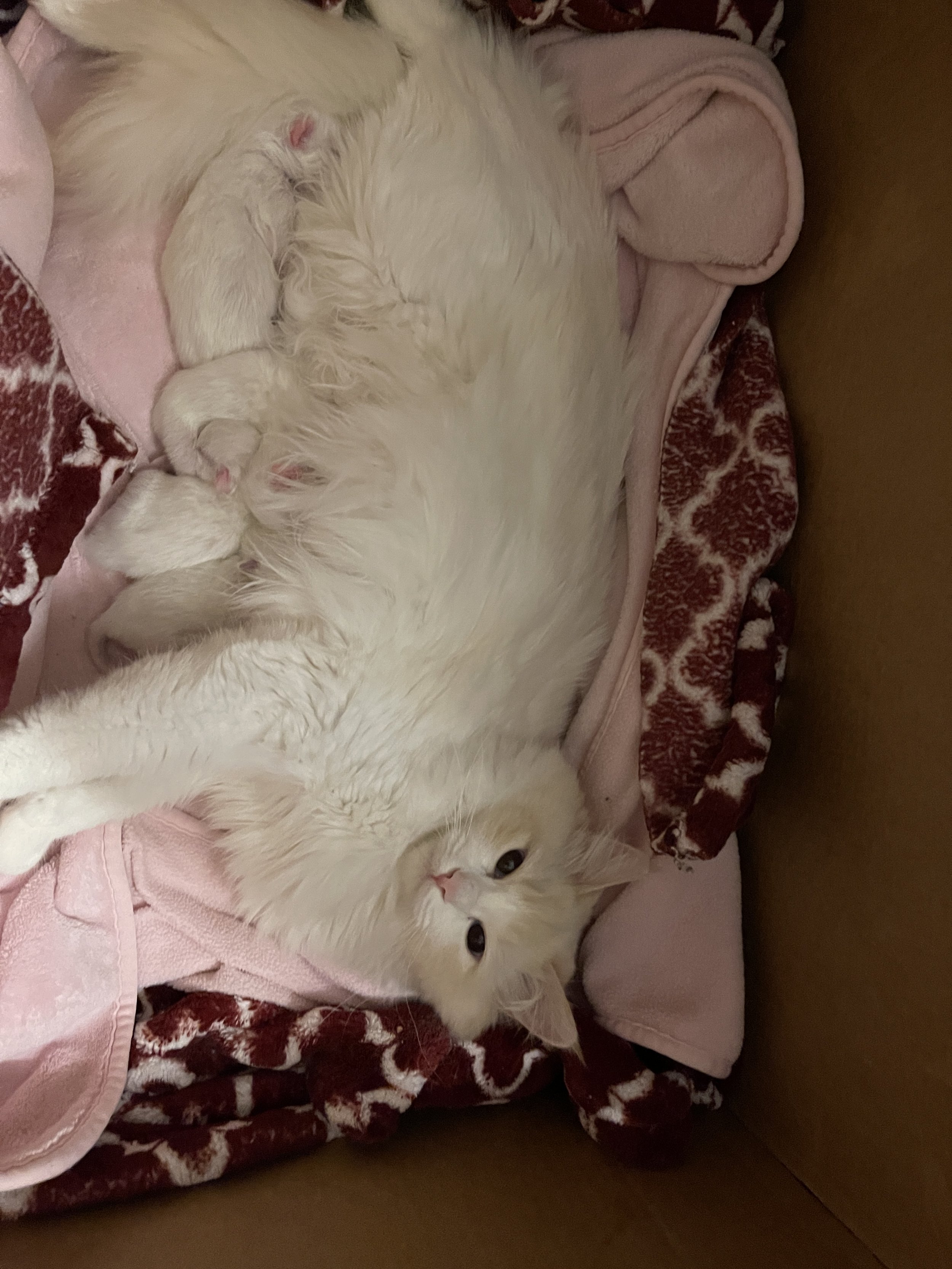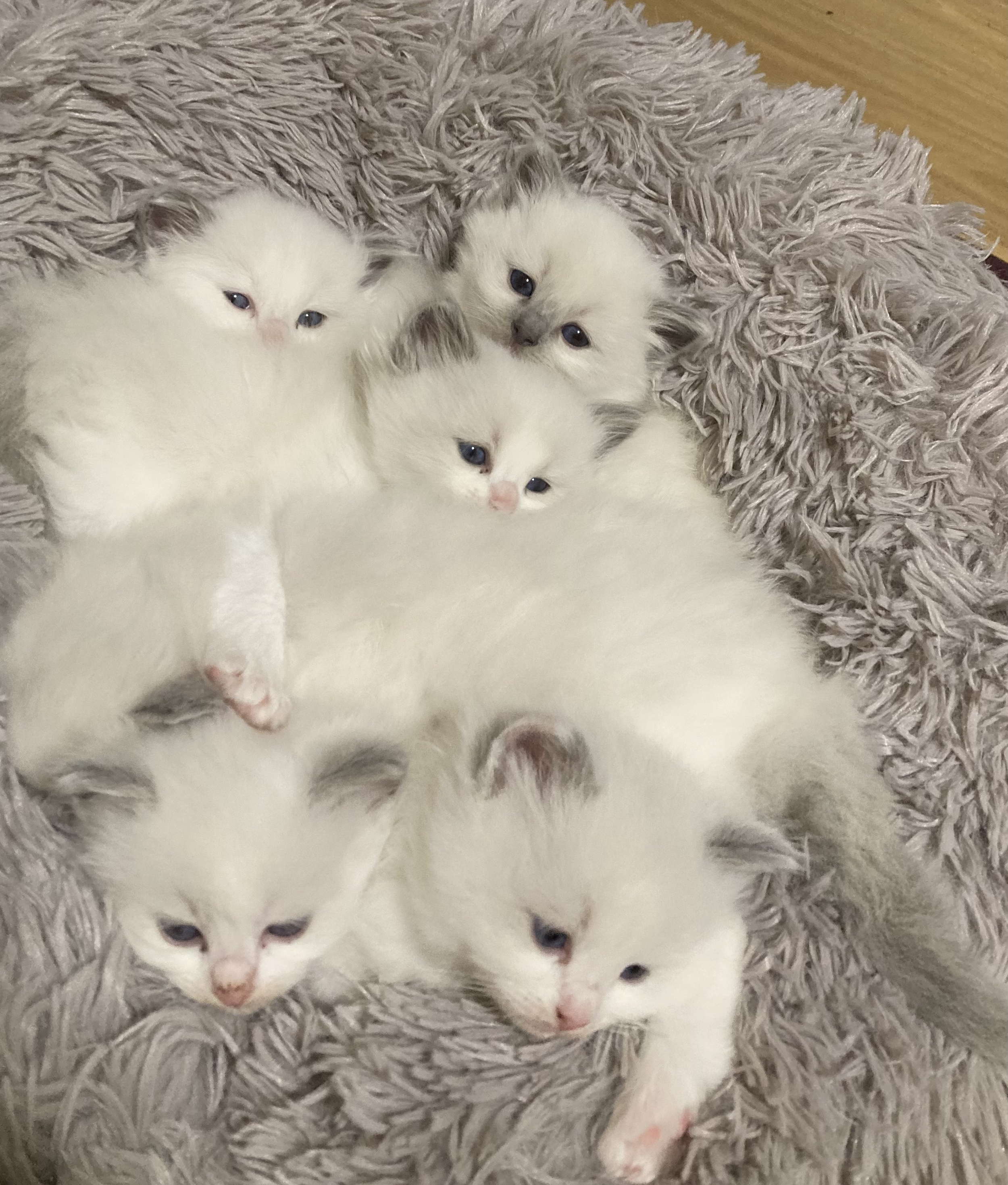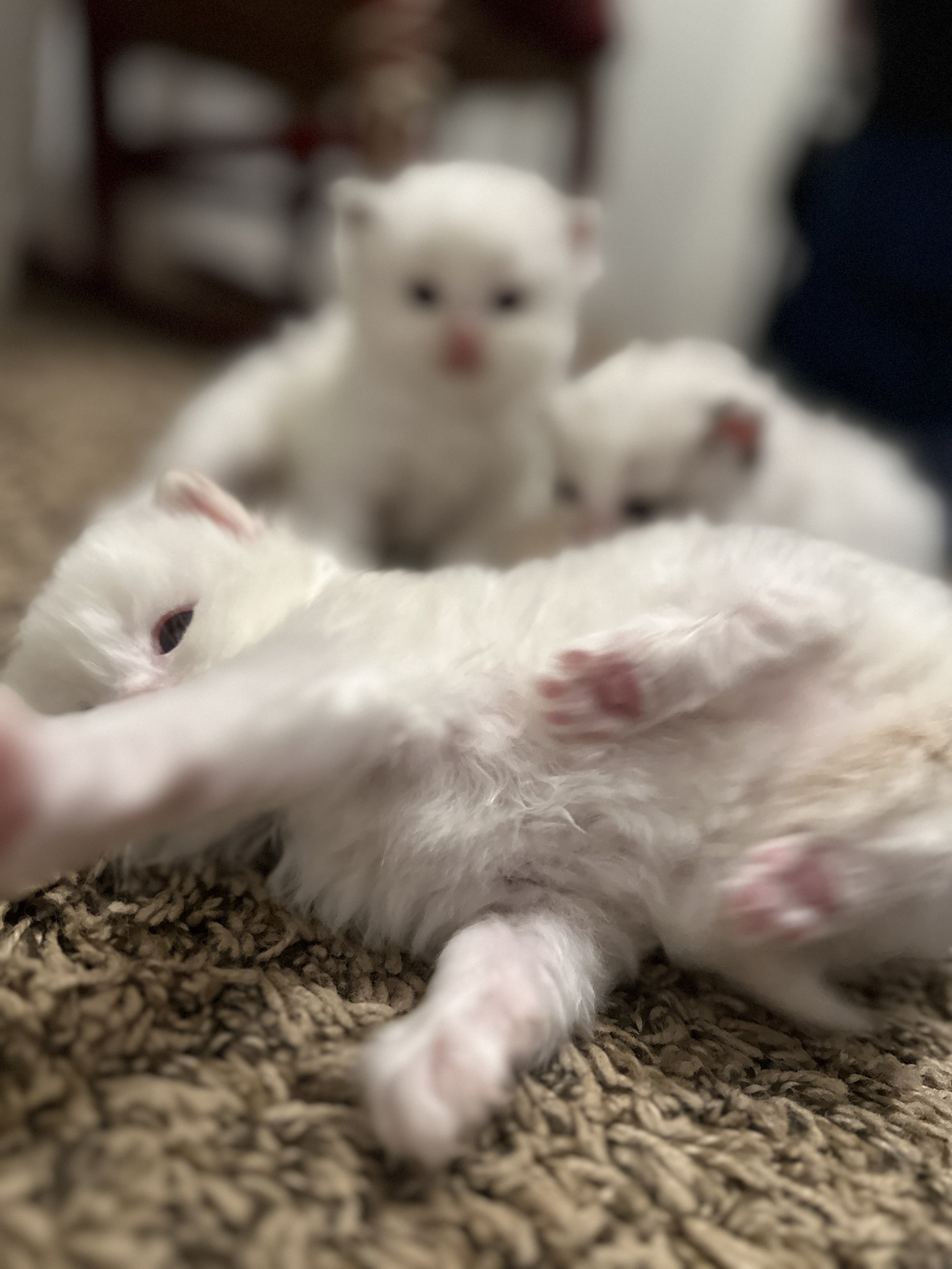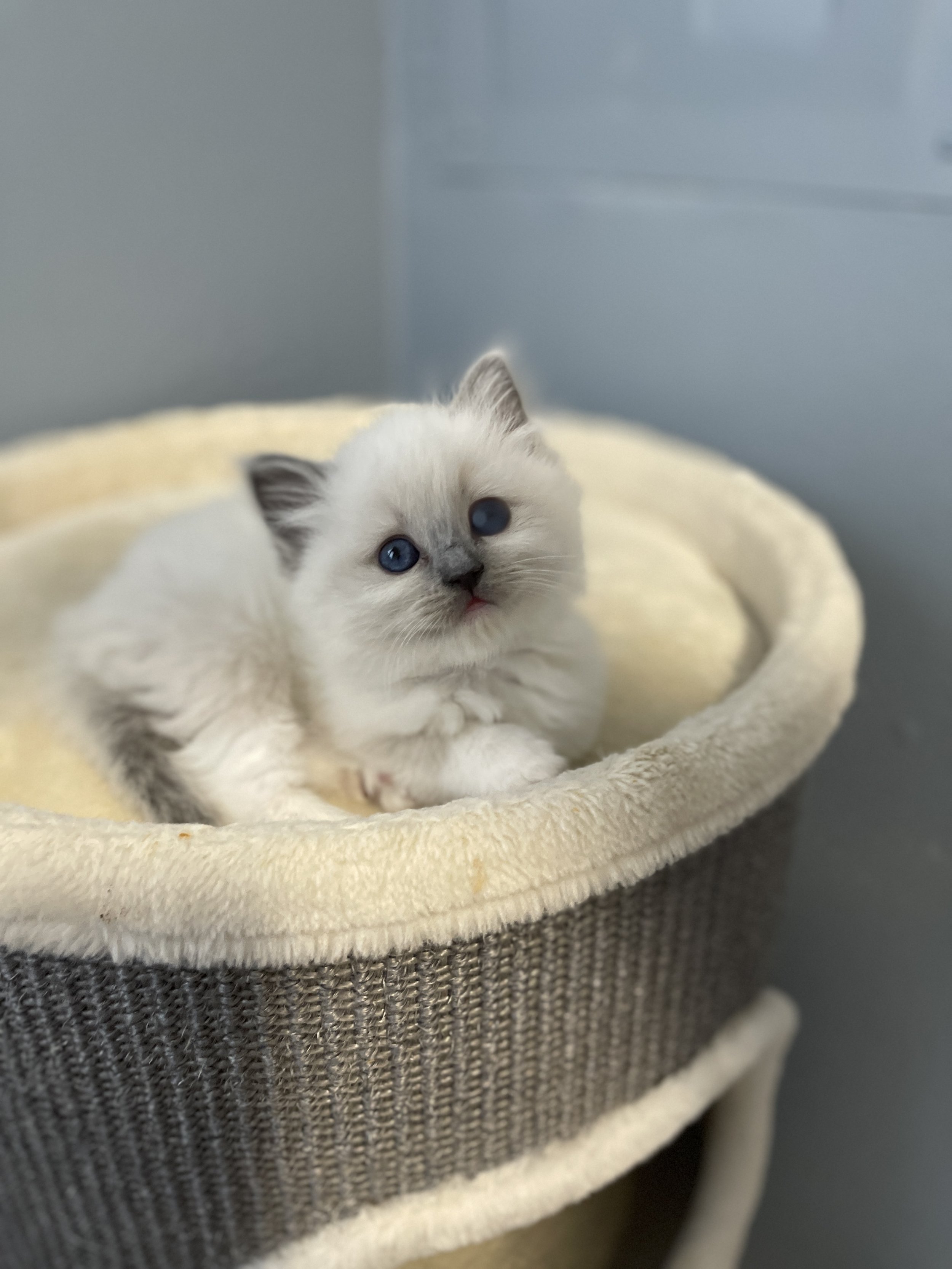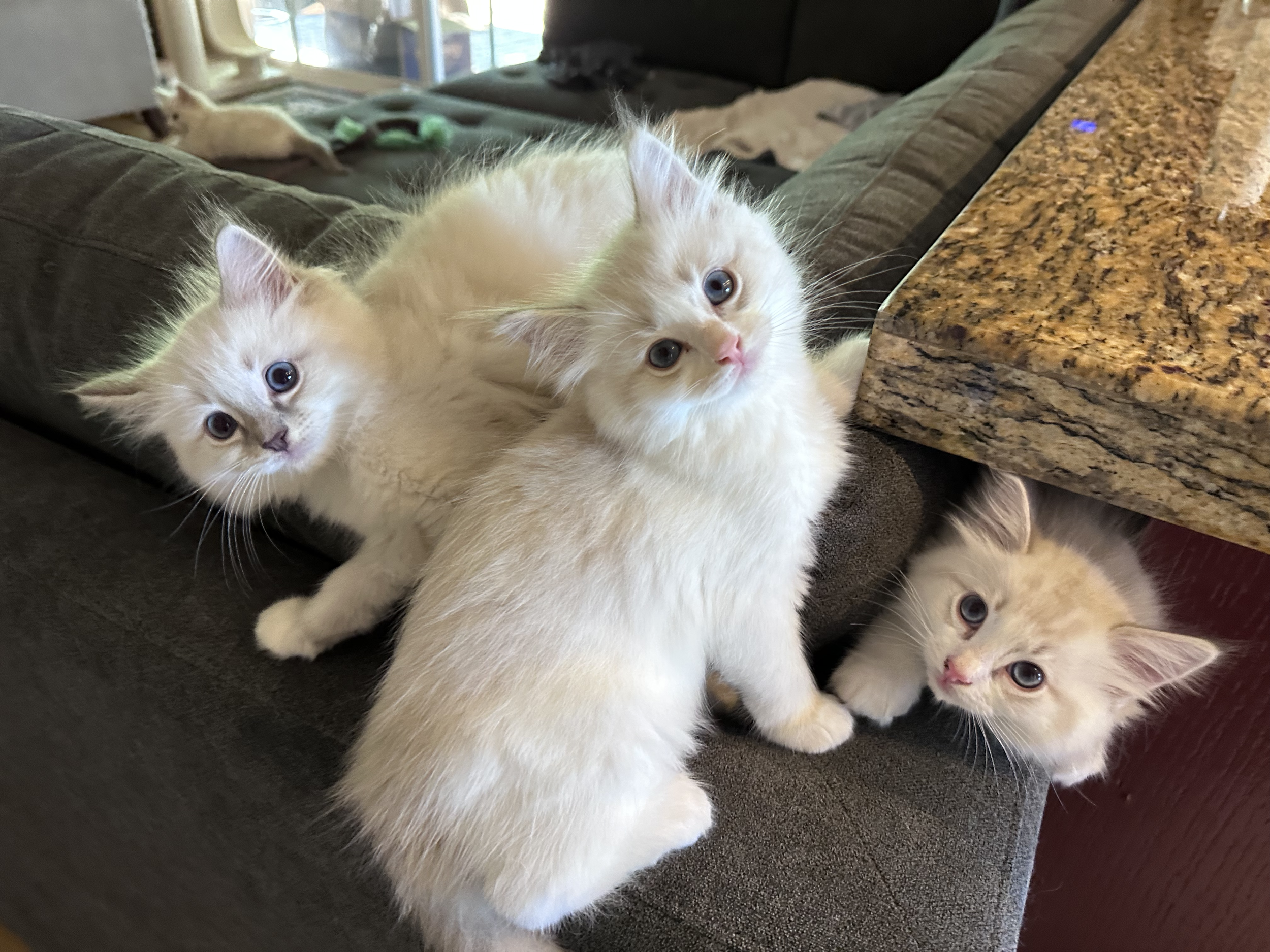The Life of Your Kitten Before They Come Home
The life of our little cuddle-fluffs before they get to you……
Our sweet little kittens are born in a cozy, secluded spot that their mama has been preparing for a few days. We set up a birthing box in the master bedroom closet, with plenty of soft cozy blankets, heating pads, light, and other necessities for the big day. Once mama shows signs of impending labor we are close by her side to help her through the process. Delivery is monitored with all emergency equipment on hand, however we very rarely need to use it as mama handles everything beautifully. The babies are only handled to weigh.
Supplements are provided if needed, and babies are clean, dry, and nursing before pictures are taken and sent. For the next two weeks, the babies are cuddled close to mama and aren’t bothered with cameras, videos and flashes too much - although we can’t help but hold and cuddle and love them. Once they are about three weeks, the kittens start to emerge from the nest. Their eyes start to open, their ears are opening up, and they look around in awe at the wide, wide world (which at this point is still just a box).
Then we move them to a bigger area in the master bedroom. Typically this is a tent that provides a little more room to roam. During this stage they discover their feets, they discover that they can roll over, and they discover their siblings. Their nose is still the most dominant sense that leads their discovery. They still don’t stray too far from the bundles of siblings that provides the warmth and safety that they are used to.
At about four to five weeks we give the babies the opportunity to try a little bit of kitten mousse - just a touch and typically on our fingers. Mama is still the main source of nutrition, but it helps her to have a little meal available for the babies. At about five weeks they become very interested in the additional calories and, just like a human baby, make a big mess and get the baby food everywhere! This is when we introduce the first little litter box - a cookie sheet pan with rolled oats and cat attract. You never know with babies - they tend to eat everything, so first litter is really just food…
But they get the hang of it. Once mama gets tired of eating poop (yes, she has been eating poop until now, poor thing) little piles are found in the nest, which are quickly moved to the litter (oat) box. That helps them understand what it’s for. It doesn’t take long for them to learn to eat food, drink water, and use the litter box. By this time the kitties have been moved to our living area. They are exposed to day-to-day household noises; the TV, the piano, mandolin and other musical instruments, the vacuum, radio, cooking, other pets, and general household noises. As they continue to gain strength and curiosity, their enclosure is enlarged and time among the other kitties is increased (and of course we continue to hold and cuddle and kiss them - we just can’t resist).
At 6 weeks, when they are used to eating kitten food, drinking water, and using the litter box, they are allowed to explore more of the rooms of our home. Their areas of access continues to increase with their age (and confirmation of litter box use). By the time they are 8 weeks, the kitties are running freely through the house, playing with each other, rough and tumbling, and ready for social media! They get to play on the big cat trees, run through the halls, and learn what’s okay and what’s not okay for them to explore. Their personalities emerge, and we, of course, get attached to every single one of them.
The final few weeks with us are spent learning from mama how to be a cat, learning from us how to live with humans, and learning from other kittens how to enjoy life and have fun. We do wish that we could keep every single one of them, but then we would not be able to continue breeding the beloved Ragdoll cat. So thank you for allowing us to continue this wonderful breed!




